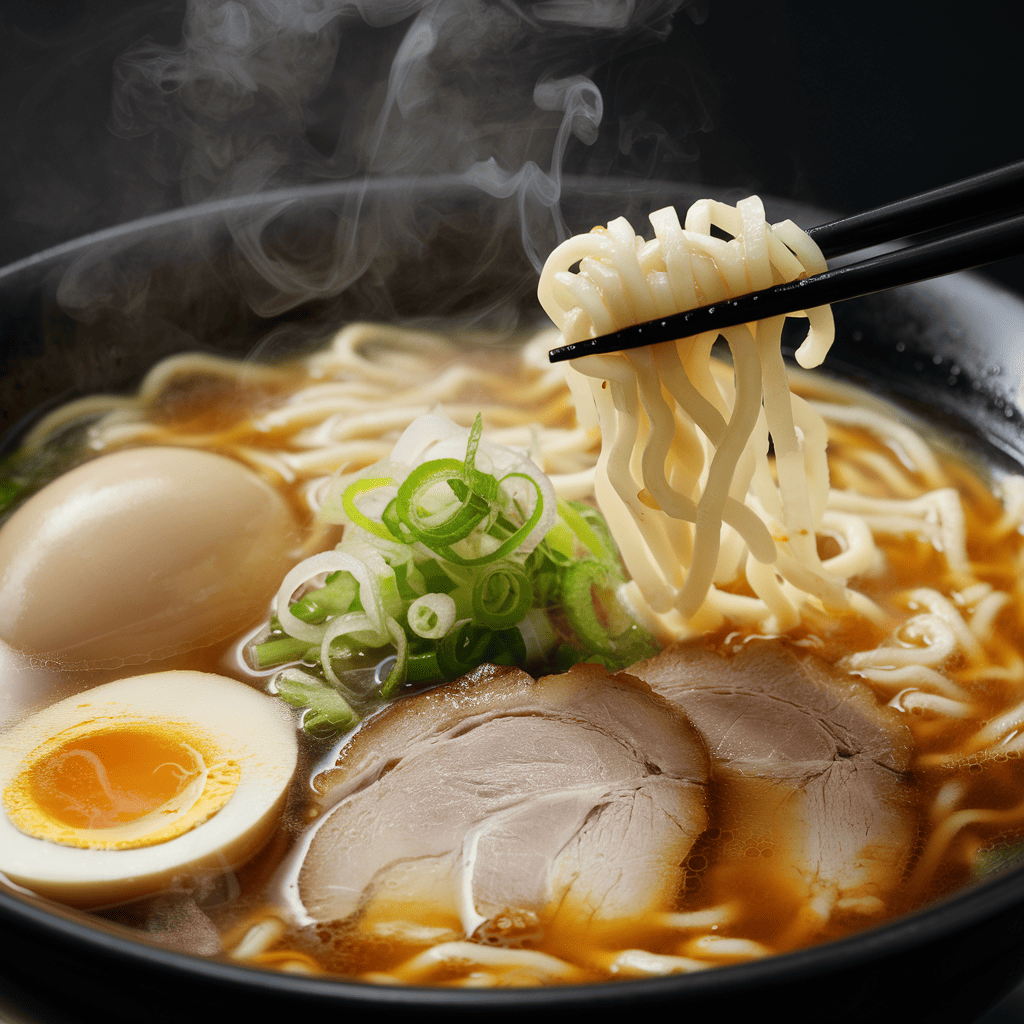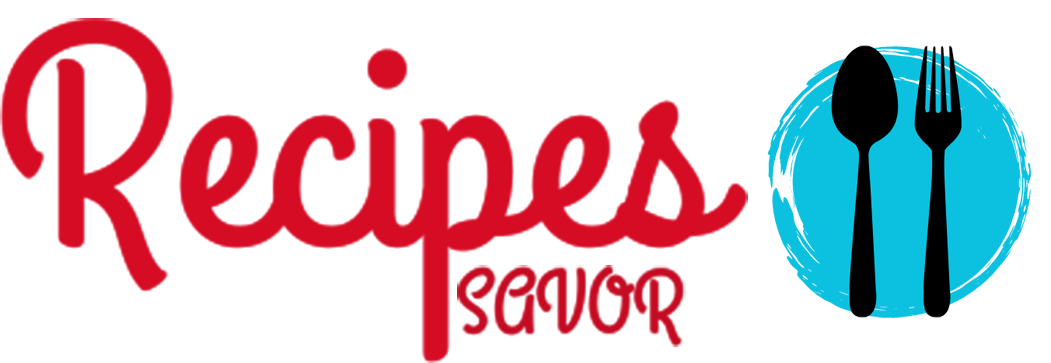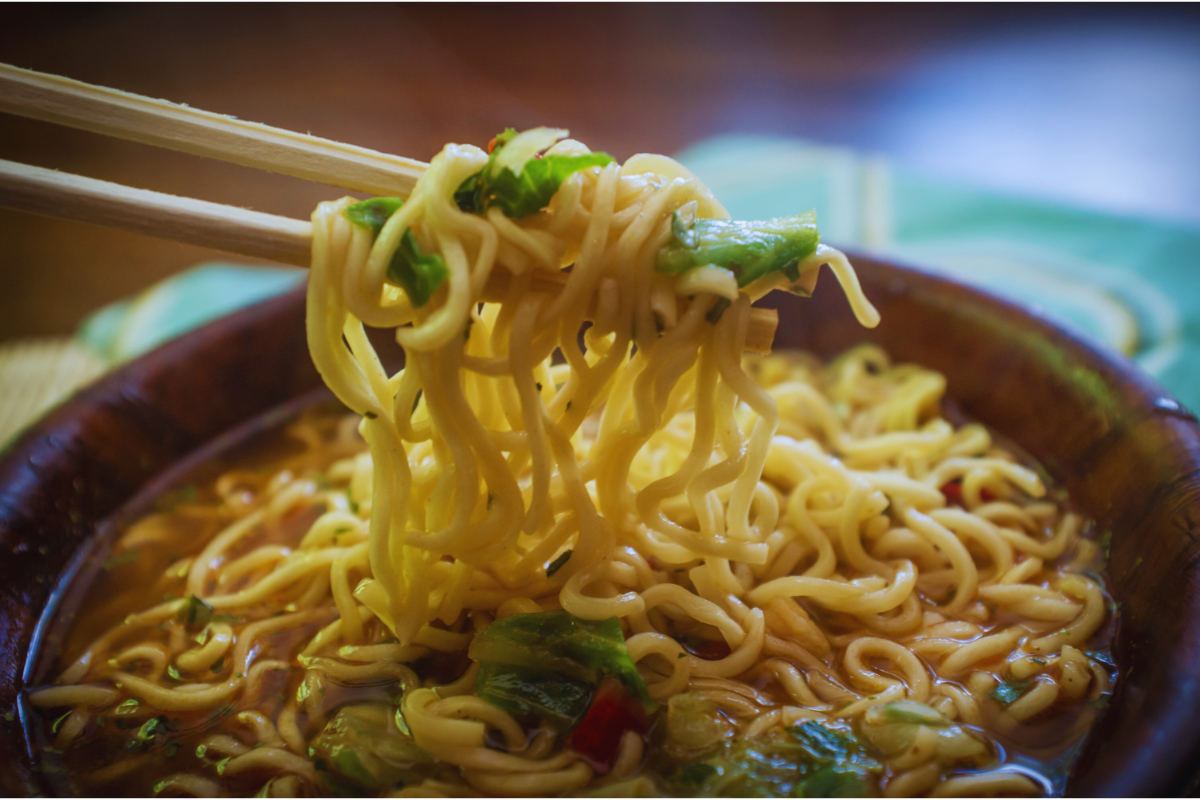Introduction
Ramen, a dish that originally hails from Japan, has taken the global culinary stage by storm. Renowned for its rich flavors and comforting warmth, ramen’s popularity is undeniable. Food enthusiasts and health experts frequently debate the health implications of ramen, often viewing it as a quick and satisfying meal.
Is Ramen a Healthy Soup
Is ramen conducive to a healthy lifestyle? This question often sparks considerable debate. While some point to ramen’s satisfying nature and culinary versatility, others raise concerns about its nutritional content, especially when it comes to sodium and calorie levels. Yet, despite these debates, ramen continues to be a staple in the diets of many, cherished for its delightful taste and the comfort it provides.
In this first part of our exploration, we begin by setting the stage with a broad look at ramen—its roots, its rise to fame, and why it sits at the crossroads of culinary delight and health concerns. As we move forward, we’ll peel back the layers of this beloved dish, investigating what goes into a bowl of ramen and how these ingredients can influence both its taste and nutritional value. Stay tuned as we delve deeper into the caloric landscape of ramen in the next section, where we will break down its components and discuss ways to enjoy ramen without compromising on health.
Ramen Nutrition Analysis
Caloric Content of Ramen
When it comes to caloric intake, ramen can be quite variable. When consumed entirely, a standard bowl of ramen typically contains between 450 and 600 calories.
In a standard bowl of ramen, calories are distributed as follows: noodles comprise 50%, soup 35%, and toppings 15%. However, calorie content varies with different ramen styles. For instance, lighter Shio ramen has around 450 calories, whereas richer Jiro-style ramen can be much higher.
Macronutrients in Ramen
Upon closer examination, we discover that the primary components of ramen are carbohydrates, proteins, and fats. Wheat noodles are heavy in carbohydrates but poor in fiber, raising nutritional concerns. Due to their processing, ramen noodles might contain over 20 cubes of sugar. Toppers like pork pieces and eggs offer protein, but they also add fat, especially saturated fats, which should be avoided.
Sodium and MSG in Ramen
One of the most contentious aspects of ramen’s nutritional profile is its sodium content. Ramen broth, richly flavored and often salty, can contain a significant amount of sodium, which might pose health risks if consumed excessively. It’s crucial, however, to contextualize these elements within a broader dietary framework. For many, the inclusion of MSG (monosodium glutamate) in ramen also sparks debate. Though MSG enhances flavor without being inherently harmful, its presence in food continues to be controversial in many circles.
Nutritional Additions and Alternatives
Fortunately, there are ways to boost the nutritional profile of a ramen meal.Lighter, clearer broths like chicken or vegetable-based ones can cut calories while adding taste. A bowl of ramen may be balanced by adding a variety of veggies for fiber and vitamins. Making homemade broth or ordering low-sodium ramen at restaurants can help you cut salt.
As we delve into the complex blend of flavors and nutrients in ramen, we acknowledge that it might not always be the healthiest choice initially. However, with adjustments and informed choices, it can be integrated into a balanced diet. In the following section, we’ll contrast ramen with other fast foods and explore strategies for incorporating it into a healthy eating plan. Stay tuned to discover how you can relish your ramen without guilt!
Comparing Ramen to Other Foods and the General Dietary Impact
The context of a balanced diet
Ramen, like any other food, can be part of a balanced diet if consumed mindfully. Understanding its place within your overall dietary intake is crucial. When compared to other fast foods, ramen can be a healthier option, especially when modified to include less sodium and more vegetables. However, it’s essential to consider the frequency and portion size of ramen consumption as part of a diversified diet that includes a wide range of nutrients from other food sources.
Comparison with Other Fast Foods
Fast food is often associated with high calories and low nutritional value. A standard meal like a burger and fries can easily top 700 calories, mainly from unhealthy fats and simple carbs. Conversely, a balanced bowl of ramen, especially with a lighter broth and extra veggies, usually contains fewer calories and offers more nutrients like vitamins from vegetables and protein from meat or eggs. Thus, ramen can be a wiser option when seeking a quick and flavorful meal.
Personal health and regular ramen consumption
The health effects of frequent ramen consumption vary based on individual habits and the type of ramen consumed. Heavy, fatty broths like Tonkotsu can pose risks due to their high calorie and saturated fat content. However, moderation, opting for lighter styles, and balancing with nutritious foods can mitigate these risks. Personal stories of regular ramen eaters maintaining health stress the importance of balance and moderation, along with exercise and hydration. Despite its fast food association, ramen can be part of a healthy diet with smart choices on type and frequency. Next, we’ll tackle common questions on ramen and health for further guidance. Stay tuned for insights in our next section!
Culinary Tips for Healthier Ramen
Ramen’s adaptability makes it an excellent canvas for culinary creativity, especially when aiming to make it a healthier meal option. Here are some practical tips and tricks for enhancing the nutritional profile of your ramen without sacrificing flavor.

Choosing Healthier Broths
- Opt for broths that are clear and light, such as chicken or vegetable broths, which tend to have a lower fat content and fewer calories. Avoid creamy broths like Tonkotsu. Incorporating homemade broths can significantly reduce the sodium levels, providing a healthier base for your ramen.
Incorporating more vegetables
- Vegetables are not only nutrient-dense but also add color, texture, and flavor to ramen. Load up your bowl with greens like spinach, kale, or bok choy, and add color with carrots, bell peppers, or corn. These additions contribute valuable vitamins and increase fiber content, which is beneficial for digestion and overall health.
Selecting lean proteins
- Choose lean protein options such as chicken breast, tofu, or even seafood like shrimp or scallops to add to your ramen. These proteins are lower in saturated fats and calories compared to traditional pork slices, making your ramen bowl leaner and heart-healthier.
Modifying the noodles
- Consider reducing the number of noodles, or opting for whole-grain or vegetable noodles as a healthier alternative. Some ramen shops offer the option to adjust noodle portions or substitute standard noodles with lower-calorie options, which can make a significant difference in the meal’s overall caloric intake.
Mindful Seasoning
-
Season wisely to enhance flavor without overloading on sodium. Experiment with herbs and spices like ginger, garlic, or chili, which provide robust flavors without the adverse effects of excessive salt intake. A splash of sesame oil or a dash of vinegar can also enrich the flavor profile without adding too many extra calories.
Ramen’s Soup and Cultural Significance
More than just a meal, ramen is a significant part of Japanese culture, embraced globally with regional adaptations that reflect local tastes and dietary preferences. Understanding the cultural dimensions of ramen can enhance our appreciation of its versatility and culinary depth.
Ramen’s Evolution in Japan
- Originally imported from China, ramen has undergone significant evolution in Japan, emerging as a national dish renowned for its regional variations. Each region in Japan offers a unique twist on ramen, from the miso-based broths of Hokkaido to the soy sauce-flavored ramen of Tokyo.
Global Adaptation of Ramen
- Ramen has undergone global adaptations to cater to a wide range of dietary trends and preferences. For instance, in the United States, people often view ramen as a comfort food that offers endless customization options. Vegan and vegetarian ramen versions are becoming increasingly popular, showcasing the dish’s ability to evolve and cater to a broad audience.
Cultural Celebrations Involving Ramen
- Numerous festivals and competitions celebrate ramen, highlighting its status as a culinary icon. These events often serve as a platform for innovation and culinary exchange, where chefs and food enthusiasts gather to share their passion for ramen and explore new flavors and techniques.
This deep dive into the culinary and cultural aspects of ramen illustrates its global appeal and adaptability. Understanding how ramen is prepared and consumed globally allows enthusiasts to appreciate its complexity and contemplate the healthiest, most balanced ways to enjoy this beloved dish. Next, we will investigate how ramen impacts lifestyle choices and how it fits into various global eating habits. Stay tuned for more insights into the vibrant world of ramen.
FAQs
- Is ramen good for weight loss?
- The high carbohydrate and sodium content of ramen typically makes it unsuitable for weight loss. However, you can occasionally include ramen in a weight-loss diet by making adjustments, such as choosing lighter broths, adding more vegetables, and controlling portion sizes. It’s all about how you tailor your bowl.
- Can ramen be part of a healthy diet?
- Yes, if consumed in moderation and balanced with healthier ingredients, ramen can be a part of a healthy diet. Opting for broths made from natural ingredients, increasing the vegetable toppings, and avoiding extra-fatty meats can enhance the nutritional profile of your ramen meal.
- What are the healthiest types of ramen?
- The healthiest types of ramen are typically those with clear broths, such as Shoyu or Shio, which are less oily and contain fewer calories than creamy, fatty broths like Tonkotsu. Including lots of fresh vegetables and lean proteins can also make your ramen healthier.
- How can I make instant ramen healthier?
- To make instant ramen healthier, discard the flavor packets that are high in sodium and additives and create your own broth using fresh ingredients like chicken stock, miso, or soy sauce. Adding vegetables, a protein source, and a smaller amount of noodles can also make an instant ramen meal more balanced.
- Does ramen affect cardiovascular health?
- Regular consumption of traditional ramen, which can be high in sodium and saturated fats, may impact cardiovascular health, particularly if other parts of one’s diet are also high in similar nutrients. To mitigate this, consider variations in ramen that are lower in sodium and saturated fats, and balance your diet with heart-healthy foods.
- Are there any nutrients in ramen?
- Ramen can provide certain nutrients, depending on the ingredients used. Broths can be a good source of minerals if made with bone stocks. Toppings like eggs, green onions, and other vegetables can provide protein, vitamins, and minerals. Choosing the right ingredients is key to boosting the nutritional value of ramen.
This FAQ section aims to answer common questions and concerns about ramen’s health impact. It offers insights on enjoying ramen more healthily by understanding its components and making informed choices. With this knowledge, you can relish ramen while still maintaining a balanced diet.
Sure, I’ll expand the conclusion to provide more detail and insight into the discussion about ramen’s health implications.
Conclusion
Ramen, now a global favorite, sparks nutritional debates due to its high sodium and refined ingredients. Yet, its healthiness varies based on ingredients and preparation. To integrate ramen healthily, moderation and customization are key.
Swap traditional ingredients for whole grain noodles, low-sodium broths, and more veggies and lean proteins. Choose homemade or quality restaurant versions over preservative-laden instant varieties.
Ultimately, ramen’s place in your diet hinges on your dietary habits and goals. Enjoy it healthily by selecting ingredients mindfully and not making it a dietary staple. Like many global cuisines, making informed choices is key to enjoying ramen in a health-conscious manner.

